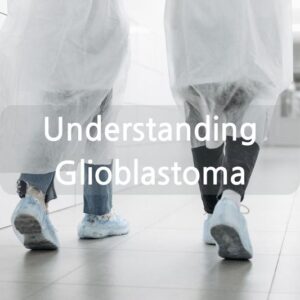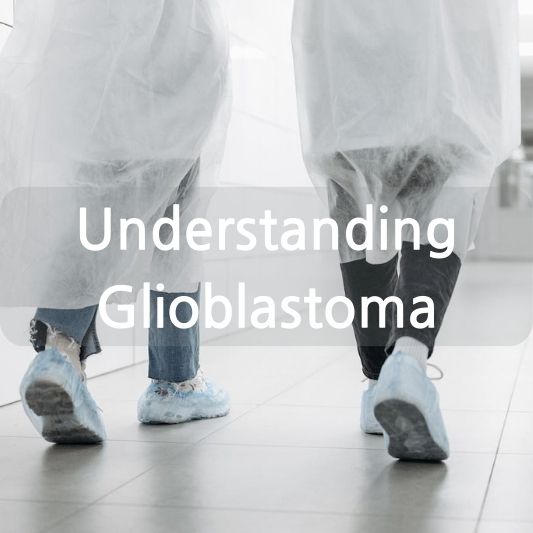Glioblastoma, one of the most aggressive forms of brain cancer, poses significant challenges to patients, families, and medical professionals alike. This article aims to shed light on the intricacies of glioblastoma, including its causes, symptoms, diagnosis, treatment options, prognosis, and ongoing research efforts.

Introduction to Glioblastoma
Glioblastoma, also known as glioblastoma multiforme (GBM), is a type of malignant brain tumor that develops from glial cells within the brain. These tumors are highly invasive and tend to grow rapidly, making them difficult to treat effectively.
Understanding Glioblastoma: Causes and Risk Factors
Genetic Predisposition
While the exact cause of glioblastoma remains unclear, certain genetic mutations and predispositions may increase an individual’s risk of developing this aggressive form of brain cancer.
Environmental Factors
Exposure to certain environmental toxins or radiation may also play a role in the development of glioblastoma, although more research is needed to fully understand these associations.
Signs and Symptoms of Glioblastoma
Glioblastoma can manifest with a variety of symptoms, including persistent headaches, seizures, cognitive impairment, and personality changes. These symptoms often worsen over time as the tumor grows and exerts pressure on surrounding brain tissue.
Diagnosis and Staging of Glioblastoma
Diagnosing glioblastoma typically involves a combination of imaging tests such as MRI or CT scans, followed by a biopsy to confirm the presence of cancerous cells and determine the tumor’s grade and stage.
Treatment Options for Glioblastoma
Surgery
Surgical resection is often the initial treatment for glioblastoma, aiming to remove as much of the tumor as possible while preserving neurological function.
Radiation Therapy
Following surgery, patients may undergo radiation therapy to target any remaining cancer cells and prevent further tumor growth.
Chemotherapy
Chemotherapy, either in the form of oral medications or intravenous infusion, may be used in conjunction with surgery and radiation therapy to help destroy cancer cells and reduce the risk of recurrence.
Immunotherapy
Emerging immunotherapy treatments show promise in harnessing the body’s immune system to target and destroy glioblastoma cells, offering new hope for patients with this challenging diagnosis.
Prognosis and Survival Rates
Despite aggressive treatment approaches, glioblastoma carries a poor prognosis, with median survival rates typically ranging from 12 to 18 months following diagnosis. However, advances in treatment modalities and supportive care continue to improve outcomes for some patients.
Coping with Glioblastoma: Support and Resources
Navigating a glioblastoma diagnosis can be emotionally and physically challenging for patients and their loved ones. Accessing support groups, counseling services, and educational resources can help individuals cope with the impact of the disease and make informed decisions about their care.
Ongoing Research and Future Directions
Researchers worldwide are actively investigating new therapeutic approaches, biomarkers, and targeted therapies aimed at improving outcomes for glioblastoma patients. Collaborative efforts and innovative clinical trials hold promise for advancing treatment options and ultimately finding a cure for this devastating disease.
Conclusion
In conclusion, glioblastoma represents a formidable opponent in the realm of oncology, characterized by its aggressive nature and limited treatment options. However, with continued research, enhanced supportive care, and a multidisciplinary approach to treatment, progress is being made in extending survival rates and improving quality of life for individuals affected by this complex brain cancer.
FAQs
Is glioblastoma hereditary?
While certain genetic mutations may predispose individuals to glioblastoma, the majority of cases are sporadic with no clear hereditary pattern.
What are the typical treatment side effects of glioblastoma therapy?
Treatment for glioblastoma may cause side effects such as fatigue, nausea, hair loss, and cognitive changes, which vary depending on the specific therapies used.
Are there alternative therapies or complementary treatments for glioblastoma?
Some patients explore complementary therapies such as acupuncture, meditation, and dietary supplements to manage symptoms and improve quality of life, although these approaches should be discussed with healthcare providers.
What is the role of palliative care in glioblastoma management?
Palliative care focuses on improving symptom management, enhancing quality of life, and providing emotional support for patients and families facing advanced or terminal illness, including glioblastoma.
How can I support glioblastoma research efforts?
Supporting reputable cancer research organizations, participating in fundraising events, and advocating for increased funding for brain cancer research are meaningful ways to contribute to ongoing efforts to combat glioblastoma.
Learn more about Glioblastoma Symptoms!
